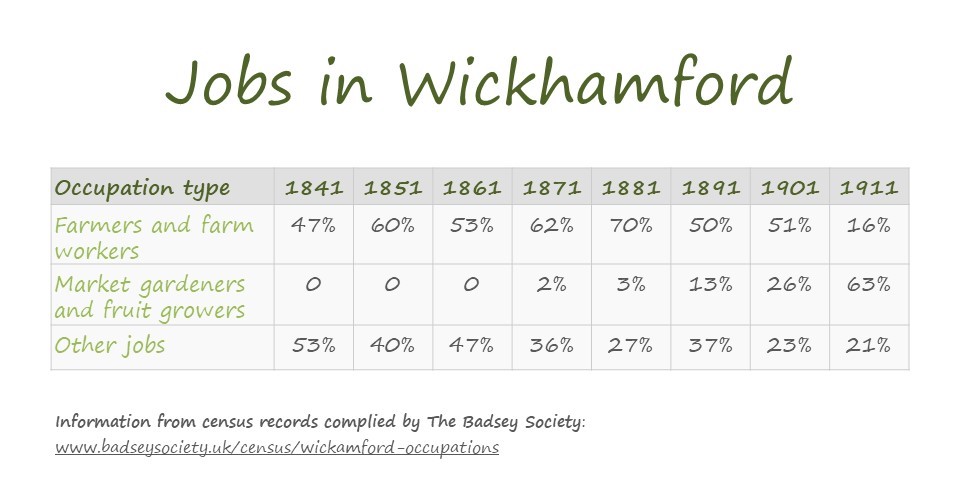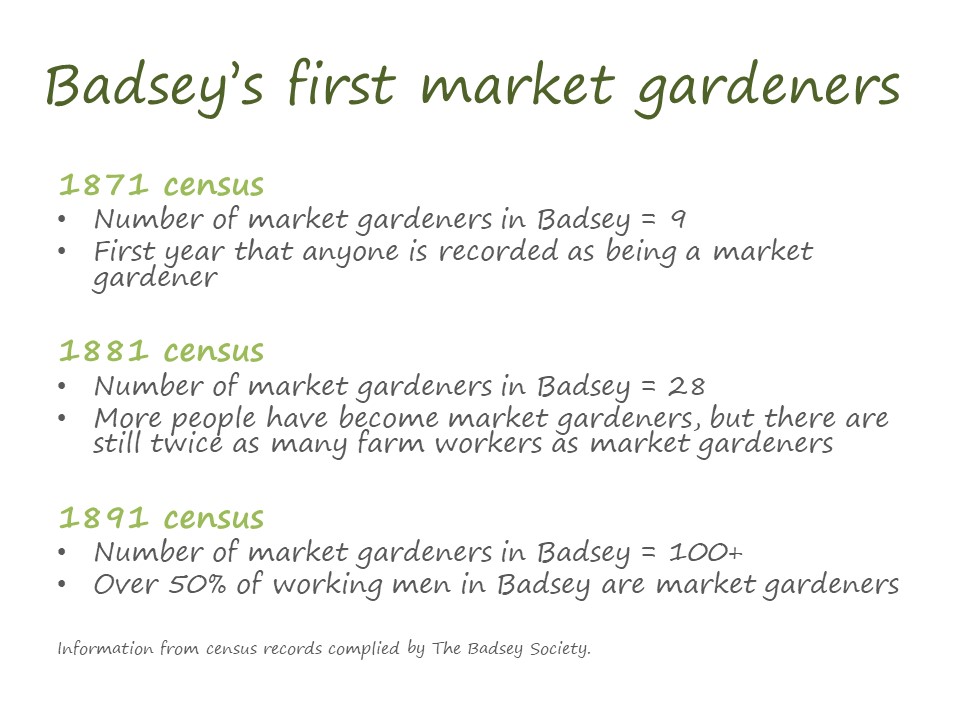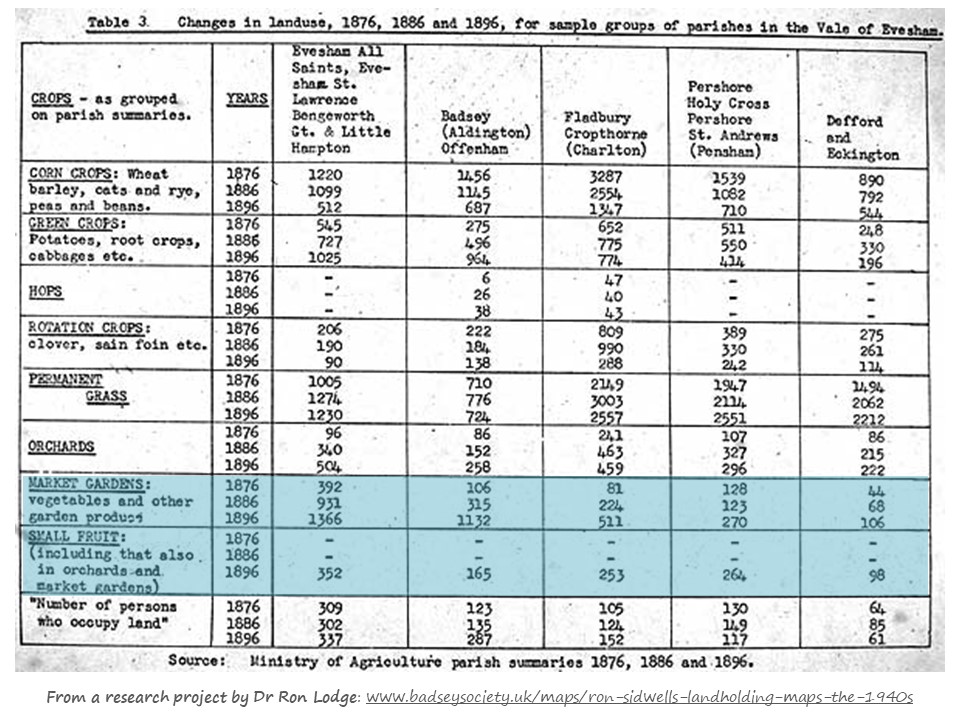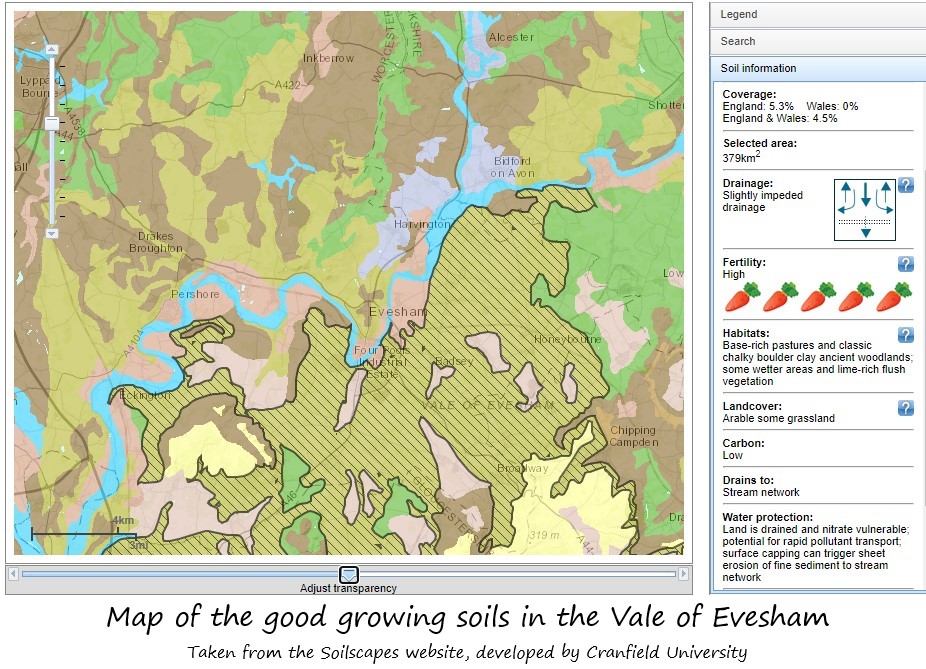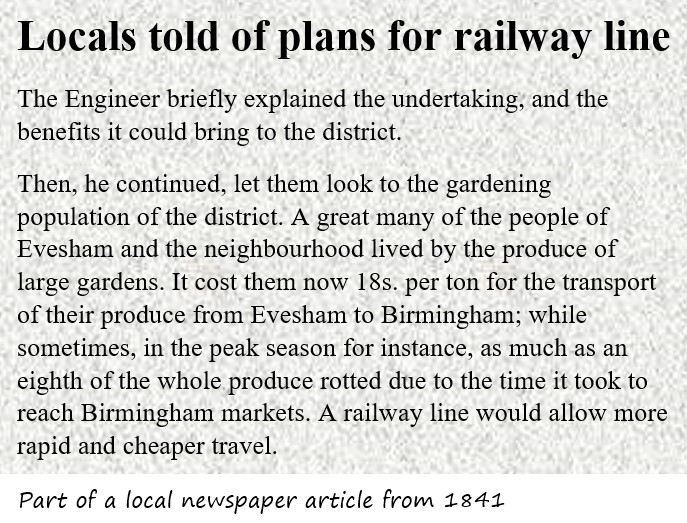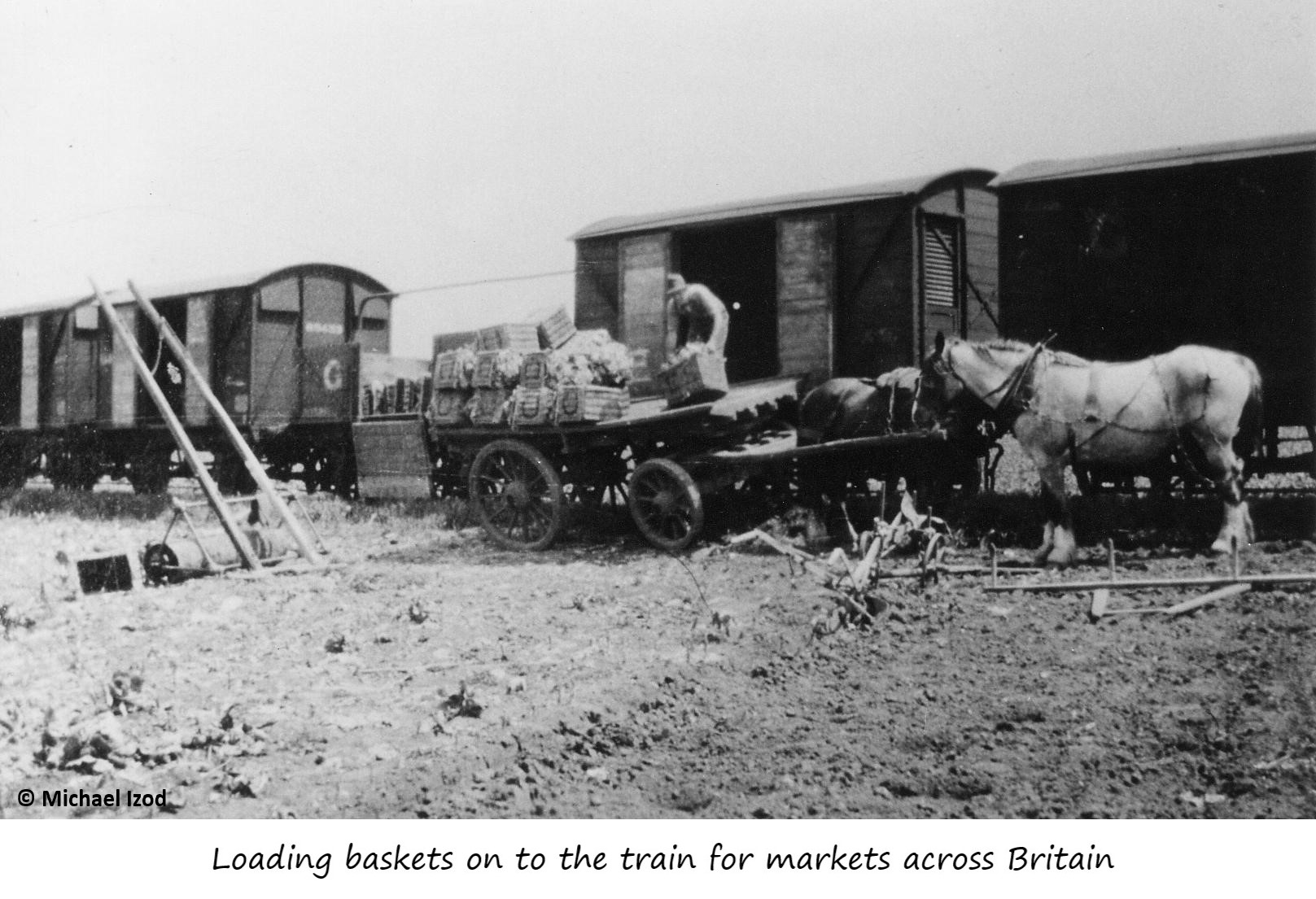How did market gardening become so popular? When did it start? And where is the Vale of Evesham? Click on a box below to find out more.
Market gardening started off very slowly, with just a few people in Evesham growing fruit and vegetables at the beginning of the 1800s (19th century). By the 1850s, the number of market gardens had grown and over the next few decades it spread to the villages around Evesham and Pershore.
Between 1870 and 1910, market gardening became much more common and lots of fruit trees were planted. In some villages, more people worked on market gardens than anywhere else.
After World War I, the government encouraged soldiers returning from war to become farmers or market gardeners. Several large farms in the Vale of Evesham were sold and the land divided up into market gardens.
Click on the image side arrows to move left or right.
Take a closer look at Evidence for the start of market gardening.
| Most market gardening in Worcestershire took place in the Vale of Evesham.
A ‘vale’ is a low lying area of land surrounded by hills. The Vale of Evesham goes as far south as Bredon hill and as far east as the Cotswold hills above Broadway. However, it doesn’t have clear edges to the north and west. Most people agree that the Vale of Evesham covers Evesham, Pershore and nearby villages. |
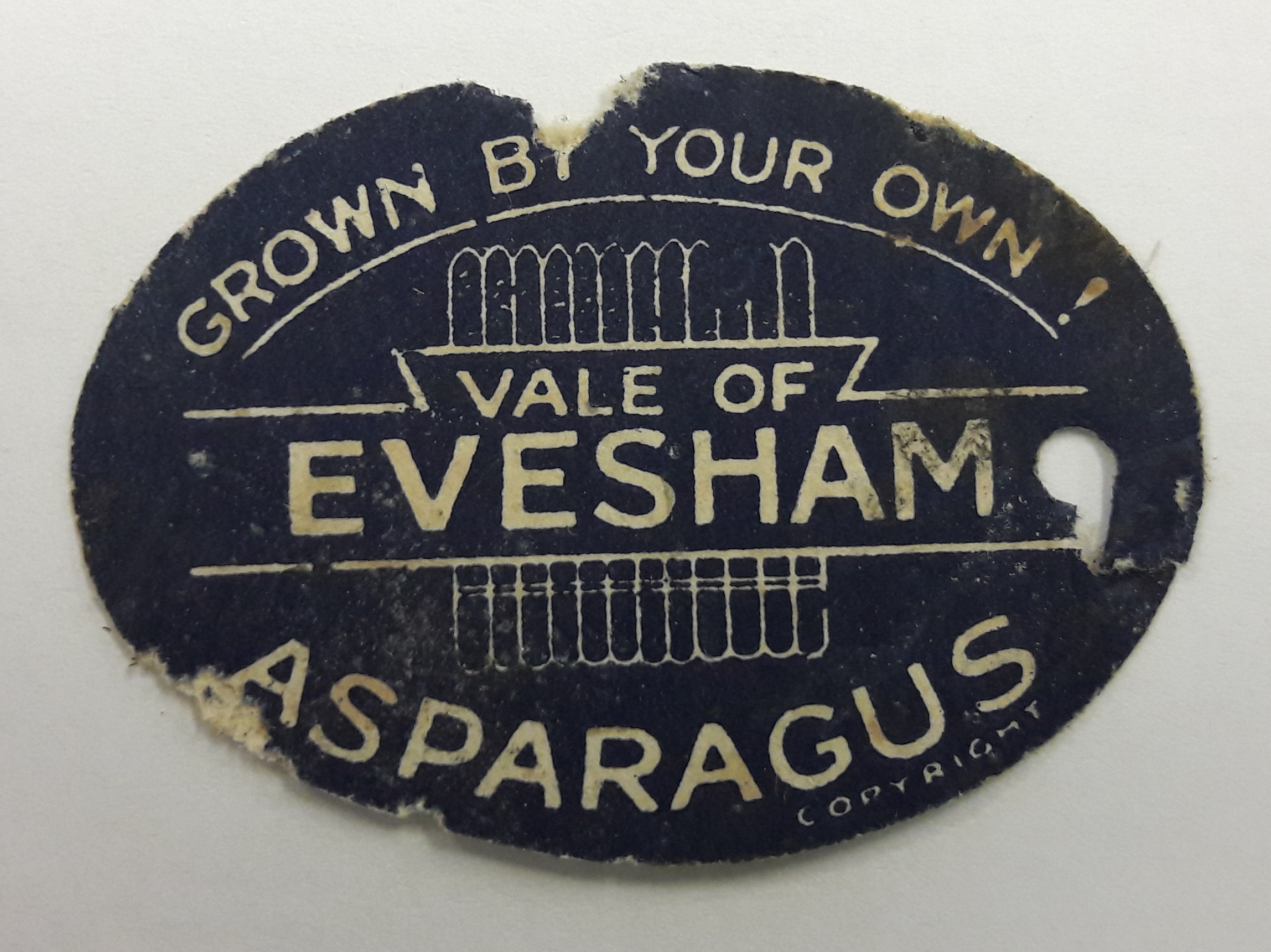 Vale of Evesham asparagus label |
Other areas of market gardening
The Vale of Evesham used to grow a lot of Britain’s fruit and vegetables, but it wasn’t the only area of market gardening. In the 1940s, the country’s main regions of market gardening were:
- The Vale of Evesham in Worcestershire
- Biggleswade in Bedfordshire
- Wisbech in Cambridgeshire
- Botley in Hampshire
- North and central Kent
There is no one reason why market gardening became so widespread in the Vale of Evesham. Alongside the advantages of market gardening, there were problems with traditional farming that encouraged workers to look for jobs elsewhere.
Opportunities
- Local soil and weather – these were both good for growing fruit, vegetables, herbs and flowers.
- Railways – two train lines, which opened in 1853 and 1868, connected the Vale of Evesham to the rest of the country. Before the railway was built, it was very slow to travel and crops could only be sold locally. For the first time, it was possible to send fruit and vegetables to markets far away.
- Evesham Custom – this was an system of rules that local landowners and market gardeners agreed to stick to. The Evesham Custom protected market gardeners from losing money if the landowner no longer wanted them on their land. It also helped good growers to buy the best land.
Need
- Problems with traditional farming – the price farmers were paid for the grain they grew dropped, which meant that they struggled to make enough money. This became a very big problem in the 1870s and farm workers began to look for work elsewhere. Many former farm workers became market gardeners.
Use the image side arrows to move left and right.
Taking to the Land
This poem is set in the early days of market gardening. It describes the life of a husband and wife who decide to become market gardeners, but have a lot to learn and are uncertain if they’ll be able to make enough money to live. Listen to how they get on – does it end well or not?
‘Taking to the Land’ was written and read by local poet Brian Smith.
